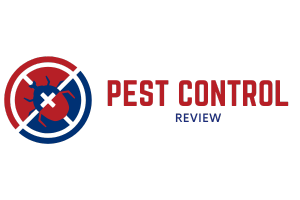Pests like bed bugs and dust mites aren’t just creepy crawlies; they can be a real nuisance, affecting the comfort and health of your home or business. These tiny invaders often cause allergies and asthma, disrupt your sleep, and lead to costly infestations if not tackled promptly. So, why is pest control crucial? Well, keeping these pests at bay ensures a safer, healthier environment. This blog’s here to guide you through understanding their behaviour, effective solutions, and preventive tips to avoid future infestations. Let’s dive into practical methods that’ll help reclaim your space and restore your peace of mind.
Understanding Bed Bugs and Dust Mites: Characteristics and Identification
Dealing with pests like bed bugs and dust mites can be tricky. They’re tiny creatures with a big talent for causing distress. Bed bugs are small, flat insects that love to hide in cracks and crevices, especially in beds, sofas, and luggage. They’re nocturnal, so they come out at night for a blood meal, leaving behind itchy, red welts on your skin. Dust mites, on the other hand, aren’t bloodsuckers but love-feeding on dead skin cells found in bedding, upholstery, and carpets. Their presence can trigger asthma and allergies due to the proteins in their waste products. Signs of a bed bug presence include bloodstains on your sheets, tiny black specks (their droppings), and occasionally, an odd musty odour. With dust mites, you might not see them directly, but increased allergy symptoms can hint at their number growing. Keep your eyes peeled for these stealthy nuisances!Understanding the Most Common Issues in Bed Bug and Dust Mite Eradication
Are you tired of pesky critters invading your space? Worried about sneaky invaders like bed bugs and dust mites? Don’t you worry; you’re not alone! Many folks face such pest-related issues, and understanding these creepy crawlies is the first step in keeping them at bay. Let’s dive into the common problems they cause.- Structural Damage: While bed bugs and dust mites might not directly munch on your house like termites, their presence can hint at larger infestations. An unattended bed bug issue can escalate, leading to physical damage when trying to rid them. Fumigations and heat treatments might affect sensitive structures, so taking action quickly is key.
- Health Risks: This one’s a biggie! Bed bugs can cause allergic reactions and their bites might lead to skin irritations. Not only do you deal with itching and discomfort, but the psychological toll is real. Dust mites, on the flip side, thrive in humid environments and their droppings often trigger asthma and respiratory problems, especially in kids.
- Food Contamination: Although these pests aren’t directly invading your pantry, their presence indicates a potential for other pests. Where there’s one problem, others follow. Maintaining a sanitary environment helps keep unwelcome guests out.
- Property Devaluation: Real talk, no one wants to buy a home infested with pests! If you’ve got a bed bug problem, it’s not just a nuisance; it can lower your property value. Prospective buyers or renters will be less inclined, lowering demand.
- Damage to Pets and Gardens: Both bed bugs and dust mites won’t directly harm your furry friends. However, gardens and lush outdoor spaces can attract other critters, creating a chain reaction. Keeping your interiors pest-free ensures the outdoors doesn’t suffer as well.
Natural Solutions and Home Remedies for Bed Bugs and Dust Mites
- Tea Tree Oil: This essential oil is famous for its anti-fungal and anti-parasitic properties. Add a few drops to water in a spray bottle and mist it over your bedding and mattress seams. Not only will it help keep bed bugs at bay, but it also leaves a fresh scent. Remember to avoid direct contact with skin as it can be quite potent.
- Diatomaceous Earth: This natural powder is abrasive to bed bugs, causing them to dry out. Sprinkle a thin layer around your bed, furniture, and any potential hiding spots. Allow it to sit for a few days before vacuuming. It’s a non-toxic choice, but ensure the area is well-ventilated while applying.
- Lavender Oil: Beyond its calming fragrance, lavender oil acts as a repellent against bed bugs and dust mites. Dilute a few drops in water and spray on the affected areas. Reapply every few days, especially after cleaning your linen.
- Baking Soda: Dust mites detest a dry environment. Baking soda helps absorb moisture, making it inhospitable. Sprinkle it on your mattress and carpet, leave it overnight, and vacuum in the morning. Regular use can dramatically reduce dust mite populations.
- Vinegar: Vinegar’s strong odor and acidic nature make it an effective deterrent. Mix vinegar with equal parts water and spray directly on any visible bed bugs or nests. While it might not kill the bugs instantly, they’ll dislike the environment and steer clear.
- Coconut Oil: Surprisingly, coconut oil can suffocate dust mites when applied directly or added to cleaning solutions. Its naturally occurring acids make surfaces unwelcome for mites. Simply add it to your regular cleaning routine for best results.
- Citrus-based Cleaners: Using citrus peels, such as lemon or orange, repels many pests, including bed bugs. Boil the peels in water, strain, and use the liquid as a spray around potential nesting areas. The strong scent acts as a deterrent, and it’s a wonderfully fresh way to keep bugs and mites away.
Chemical treatments for effective removal of bed bugs and dust mites.
When it comes to dealing with bed bugs and dust mites, chemical treatments can be quite effective. Here’s a rundown on key chemical options you might consider:- Hydramethylnon: This chemical is an excellent choice for targeting bed bugs. Apply it as a bait or gel in areas where bed bugs are often found. It works slowly, giving pests a chance to spread it to others, ultimately wiping out the colony.
- Permethrin: Widely used in insecticides, Permethrin is a synthetic chemical that attacks the nervous systems of insects. Spray it along skirting boards, bed frames, and other infested areas to create a protective barrier against bed bugs.
- Piperonyl butoxide (PBO): This isn’t an insecticide on its own but enhances the effects of other insect killers. Mix it with an active dust mite pesticide to increase efficacy, ensuring dust mites are effectively eliminated.
- Boric Acid: This mild pesticide is less harsh than others and is great for dust mites. Lightly dust it in places like mattresses and carpets. It will dehydrate and destroy their exoskeletons without harming humans when used correctly.
Essential Prevention Tips: Keeping Bed Bugs and Dust Mites Away
It’s important to stay on top of potential pest problems before they become absolute nightmares. An effective way to ensure your home stays pest-free is by adopting prevention strategies. Here’s a structured list to guide you through:- Proper Waste Disposal and Cleanliness: Keep your home tidy and dispose of rubbish regularly. Pests like rodents and cockroaches are attracted to leftover food and rubbish bins.
- Sealing Entry Points and Cracks: Regularly inspect your home for cracks and holes that might serve as entry points for pests. Use caulk or other appropriate materials to seal them.
- Using Pest Deterrents: Install screens on windows and doors to prevent pests from entering. Consider using natural deterrents like essential oils or herbs, which can be effective and non-toxic.
- Regular Inspections and Maintenance: Schedule regular inspections for signs of pests. Look for droppings, nest materials, or unusual smells. If needed, consult professional pest control services for a thorough check.
- Garden Maintenance: Keep your garden neat and remove any debris, as these can attract pests. Trim trees and bushes to keep them from touching your house, preventing easy access to pests.
- Proper Food Storage: Store food items in airtight containers to keep them safe from pests. Ensure your pantry is clean and free of crumbs.
- Check for Leaks: Fix any leaks promptly, as moisture can attract pests like termites and mould-producing insects.
- Pet Care: If you have pets, make sure their bowls are clean and food is not left out for too long, as this can attract pests like ants or flies.
Busting Myths: Bed Bugs and Dust Mites Misconceptions Explained
| Myth | Fact |
|---|---|
| Bed bugs only infest dirty homes. | Bed bugs don’t care if your home is spotless. They invade for blood, not cleanliness. |
| Dust mites are visible to the naked eye. | Dust mites are tiny. You need a microscope to see them as they’re practically invisible. |
| Natural remedies can completely eliminate bed bugs. | While some natural methods help reduce numbers, professional treatments are often needed for full eradication. |
| Cranking up your heating can kill bed bugs. | You need temperatures above 48°C for at least 90 minutes to effectively kill bed bugs, which normal home heating systems can’t achieve. |
| Only mattresses harbour dust mites and bed bugs. | Dust mites and bed bugs can be found in carpets, curtains, and soft furnishings—all sorts of places around the home. |
















